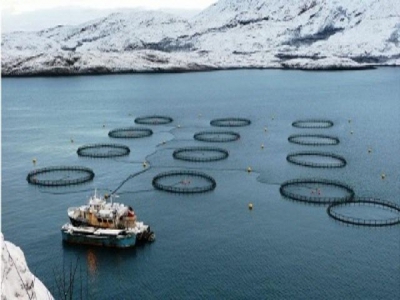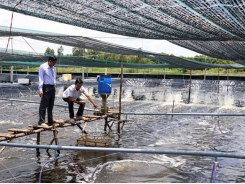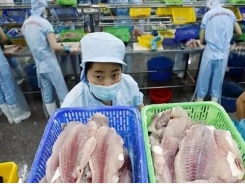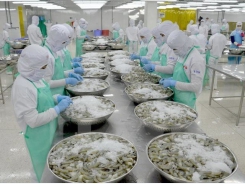Russias aquaculture industry brimming with potential

Russia is experiencing a boom in aquaculture and is seeking to increase its farmed seafood almost threefold, to 700,000 metric tons (MT) through 2030. Investment activity in the sector during the last three years suggests the projected figure can be exceeded provided some cornerstone problems be solved and international experience be used.
Photo courtesy of Russian Salmon
This is the first of a two-part series exploring Russia's aquaculture industry. Part two will appear on Friday, 24 August.
In geographical terms, Russia holds enormous potential for growing fish.
The country possesses 20 million hectares of lakes, five million hectares of impoundments, 400,000 hectares of onshore sea aquatorium, more than one million hectares of waters used for agriculture, and 150,000 hectares of fishery ponds.
Despite all these resources, aquaculture in Russia – which operates on an oil- and gas-dominated economy – has been historically neglected. Because Russian waters yield so much fish, the country hasn’t been incentivized to get involved in a highly knowledge-based and resource-consuming sphere like aquaculture.
Lower volumes reflect this sentiment. In 2017, the sector produced only 219,000 metric tons (MT) of seafood, including 186,500 MT of fish and 33,100 MT of fish seed, according to data of the Russia’s Federal Agency for Fisheries. This production volume looks tiny when compared with the Russia’s harvest in the wild – 4.9 million MT in 2017.
Interestingly, the Russian aquaculture sector’s latest production figures for 2017 (219,000 MT) are the highest seen since 1991. For perspective, in 2014, aquaculture output for the country was just 159,800 MT.
But looking solely at the current state of affairs would be misleading when assessing the sector’s development. In fact, things have drastically changed both in terms of volumes of production and the attitude of authorities and investors since 2014, when Russia imposed a ban on imported food in response to the Crimea-related sanctions enacted by the United States, Canada, Australia, Norway, and the European Union.
In 2014, a federal law on aquaculture was signed, laying the legal groundwork for the industry to accelerate. The Federal Agency for Fisheries started to actively prepare sites for growing fish and selling them through auctions. As Vasily Sokolov, deputy head of the agency, has stated, the number of ready-to-use sites for aquaculture has increased more than twofold – from 1,900 to 4,500 – since 2015.
“We also see that number of companies engaged in aquaculture has been increasing...over last four years,” Sokolov said during a news conference.
Russia’s federal government has allocated funds to help businesses ease the burden of loans for purchase of modern equipment, feed, or investment into building production capacity. The total amount allocated for rate subsidy on loans by aquaculture companies is about RUB 400 million (USD 6.1 million, EUR 5.3 million) a year.
Geographically speaking, more than 63.5 percent of all farmed seafood in the country is produced in the Russian South, with the Crimean Peninsula, Krasnodarsky Krai, Rostov, and Astrakhan regions focusing primarily on sturgeon, halibut, and carp. The Crimea also specializes in farming mussels and oysters.
THe Russian North West is second-ranked in terms of volumes. Murmansk, Leningrad, and the Republic of Karelia produce mainly salmon and char. Meanwhile, the Russian Far East focuses on scallops, oysters, sea cucumbers, crab, mussels, and saury.
Production has gone up over recent years: 159,000 MT in 2014; 153,200 MT in 2015; and 174,000 MT in 2016. Through 2030, Russia is expected to produce 700,000 MT of farmed seafood a year, according to head of the Federal Agency for Fisheries Ilya Shestakov.
Related news
Tools

Phối trộn thức ăn chăn nuôi

Pha dung dịch thủy canh

Định mức cho tôm ăn

Phối trộn phân bón NPK

Xác định tỷ lệ tôm sống

Chuyển đổi đơn vị phân bón

Xác định công suất sục khí

Chuyển đổi đơn vị tôm

Tính diện tích nhà kính

Tính thể tích ao









 Efforts underway to reopen EU…
Efforts underway to reopen EU…  Aquatic product exports rake in…
Aquatic product exports rake in…